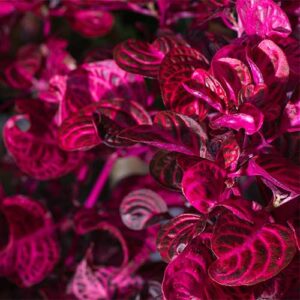About Blood Leaf
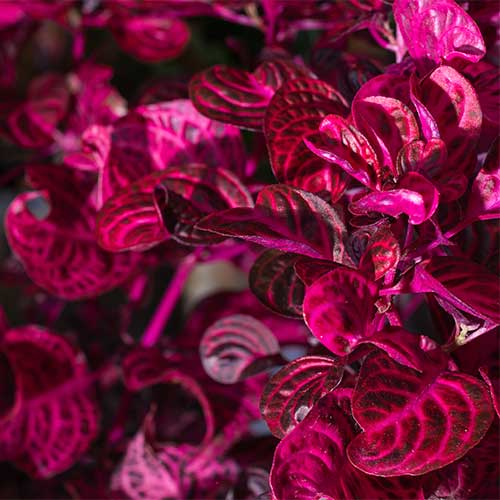
Blood Leaf Introduction
The Blood Leaf (Iresine herbstii) is a striking ornamental plant known for its vibrant foliage. Native to South America, particularly Brazil, this eye-catching plant has become a popular choice for both indoor and outdoor gardens worldwide. Its most notable feature is its brightly colored leaves, which range from deep red to pink, often with contrasting veins, creating a stunning visual display.
Blood Leaf is a member of the Amaranthaceae family and is characterized by its bushy growth habit. The plant typically grows to a height of 12-18 inches (30-45 cm) and can spread to a similar width. Its oval-shaped leaves are the main attraction, growing up to 3 inches (7.5 cm) long and displaying a range of colors depending on the cultivar and growing conditions.
While primarily grown for its foliage, Blood Leaf does produce small, inconspicuous flowers in late summer or early fall. These flowers are typically white or pale pink and grow in slender spikes. However, they are often overshadowed by the plant’s colorful leaves, which remain the primary focus for most gardeners and plant enthusiasts.
Blood Leaf Care & Growing Guide
Caring for a Blood Leaf plant requires attention to several key factors to ensure its vibrant foliage and overall health. This plant thrives in warm, humid environments and prefers indirect light, making it an excellent choice for indoor spaces or partially shaded outdoor areas in warmer climates.
One of the most critical aspects of Blood Leaf care is maintaining proper moisture levels. The plant prefers consistently moist soil but is susceptible to root rot if overwatered. It’s essential to water thoroughly when the top inch of soil feels dry, but ensure that excess water can drain freely from the pot. In terms of humidity, Blood Leaf appreciates higher levels, which can be achieved through regular misting, using a pebble tray, or placing a humidifier nearby.
Feeding your Blood Leaf is also important for maintaining its vibrant colors and promoting healthy growth. During the growing season (spring and summer), fertilize every two weeks with a balanced, water-soluble fertilizer diluted to half strength. Reduce feeding to once a month during fall and winter when growth slows. Regular pruning can help maintain the plant’s shape and encourage bushier growth, while also providing an opportunity to propagate new plants from stem cuttings.
 Soil
Soil
Blood Leaf (Iresine herbstii) thrives in well-draining, rich, and slightly acidic soil. The ideal soil composition is a mix of peat moss, perlite, and regular potting soil, which provides both nutrients and good drainage. The preferred pH range for Blood Leaf is slightly acidic to neutral, between 5.5 and 7.0.
For optimal growth, the soil should be kept consistently moist but not waterlogged. Good drainage is crucial to prevent root rot, a common issue with overwatering. Adding organic matter such as compost can improve soil structure and nutrient content.
Specific soil amendments that benefit Blood Leaf include:
1. Peat moss: Improves water retention and adds acidity
2. Perlite or coarse sand: Enhances drainage
3. Compost: Provides nutrients and improves soil structure
The soil composition significantly affects the plant’s health and growth. Well-draining soil prevents root rot, while slightly acidic conditions help the plant absorb nutrients more efficiently, leading to more vibrant foliage colors.
Soil problems to watch out for include:
1. Poor drainage: Can lead to root rot and fungal diseases
2. Compaction: Restricts root growth and reduces aeration
3. Inappropriate pH: Can affect nutrient availability
4. Salt build-up: Often from over-fertilization, can damage roots
5. Nutrient deficiencies: May cause leaf discoloration or stunted growth
6. Root boundness: Can occur if the plant outgrows its container, restricting growth
Regular soil checks and appropriate amendments can help prevent these issues and ensure optimal growing conditions for your Blood Leaf plant.
 Fertilizer
Fertilizer
Blood Leaf (Iresine herbstii) benefits from regular fertilization to maintain its vibrant foliage and promote healthy growth. Here’s a comprehensive guide to fertilizing your Blood Leaf:
Fertilization needs:
– Frequency: Every 2-4 weeks during the growing season (spring and summer)
– Reduce to monthly or bi-monthly during fall and winter
Recommended mixture:
– Balanced, water-soluble fertilizer (e.g., 10-10-10 or 20-20-20)
– Dilute to half the recommended strength to avoid over-fertilization
Optimal schedule:
1. Start fertilizing in early spring when new growth begins
2. Continue regular fertilization through summer
3. Reduce frequency in fall
4. Minimal to no fertilization in winter
Signs of over-fertilization:
– Leaf burn or scorching
– Crusty soil surface
– Yellowing leaves
– Stunted growth
– Wilting despite adequate watering
Signs of under-fertilization:
– Pale or faded leaf color
– Smaller than normal leaves
– Slow growth
– Lower leaves yellowing and falling off
Organic fertilizer alternatives:
1. Compost tea
2. Fish emulsion (use sparingly due to strong odor)
3. Seaweed extract
4. Worm castings
Specific nutrient requirements:
– Nitrogen (N): Essential for leaf growth and color
– Phosphorus (P): Supports root development
– Potassium (K): Enhances overall plant health and disease resistance
– Iron: Important for maintaining vibrant leaf color
Common nutrient deficiencies:
1. Iron deficiency: Yellowing leaves with green veins (chlorosis)
2. Nitrogen deficiency: Overall yellowing of leaves, starting with older leaves
3. Phosphorus deficiency: Purple tinting on leaves, stunted growth
Tips for successful fertilization:
1. Always water the plant before fertilizing to prevent root burn
2. Apply fertilizer to moist soil, not dry soil
3. Flush the soil every few months with plain water to prevent salt build-up
4. Adjust fertilization based on the plant’s growth and appearance
5. Use a liquid fertilizer for even distribution
Remember, it’s better to under-fertilize than over-fertilize. Start with a lower concentration and frequency, and adjust based on your plant’s response.
 Watering
Watering
Blood Leaf (Iresine herbstii) prefers consistently moist soil but is susceptible to root rot if overwatered. The key is to maintain a balance between keeping the soil moist and avoiding waterlogged conditions.
Watering requirements:
1. Frequency: Water when the top inch of soil feels dry to the touch.
2. Amount: Water thoroughly until it drains from the bottom of the pot.
3. Water quality: Blood Leaf is not particularly fussy about water quality. Tap water is generally fine, but if your tap water is hard, consider using rainwater or distilled water.
Signs of underwatering:
– Wilting or drooping leaves
– Dry, crispy leaf edges
– Slow growth
– Leaf drop
Signs of overwatering:
– Yellowing leaves
– Soft, mushy stems
– Mold on soil surface
– Foul odor from the soil
Seasonal changes in watering needs:
– Spring/Summer (growing season): Water more frequently as the plant actively grows and temperatures are higher.
– Fall/Winter: Reduce watering frequency as growth slows and temperatures cool.
Watering tips:
1. Always check soil moisture before watering.
2. Use a pot with drainage holes to prevent water from sitting in the soil.
3. Water at the base of the plant to avoid wetting the leaves, which can lead to fungal issues.
4. In very hot weather, you may need to water more frequently.
5. In winter, allow the soil to dry out slightly more between waterings to prevent root rot.
Remember, it’s better to underwater slightly than to overwater Blood Leaf. The plant can recover more easily from brief periods of drought than from the effects of waterlogged soil.
 Lighting
Lighting
Blood Leaf (Iresine herbstii) thrives in bright, indirect light. It prefers locations that receive filtered sunlight or partial shade. In its natural habitat, it often grows under the canopy of larger plants, receiving dappled sunlight.
Ideal lighting conditions:
– Indoors: Place near a north or east-facing window where it can receive bright, indirect light throughout the day.
– Outdoors: Choose a spot with partial shade, protected from harsh afternoon sun.
Signs of insufficient light:
– Elongated, leggy growth
– Fading of leaf colors
– Smaller leaves
– Slow growth
Signs of excessive light:
– Leaf scorching or bleaching
– Curling or wilting leaves
– Dry, crispy leaf edges
If natural conditions are suboptimal:
1. For low light: Use artificial grow lights to supplement natural light. LED or fluorescent lights can be effective.
2. For excessive light: Use sheer curtains or blinds to filter strong sunlight, or move the plant further from the light source.
3. Rotate the plant regularly to ensure even light exposure on all sides.
4. In outdoor settings, use shade cloth or place the plant under taller plants for protection from intense sunlight.
Remember, while Blood Leaf enjoys bright light, direct sunlight can damage its delicate leaves. Finding the right balance is key to maintaining the plant’s vibrant colors and overall health.
 Temperature
Temperature
Blood Leaf (Iresine herbstii) thrives in warm temperatures, reflecting its tropical origins. Understanding its temperature needs is crucial for maintaining a healthy plant.
Ideal temperature range:
– Daytime: 70-80°F (21-27°C)
– Nighttime: 60-70°F (15-21°C)
Temperature tolerance:
– Minimum: 50°F (10°C)
– Maximum: 90°F (32°C)
Blood Leaf can tolerate brief periods outside its ideal range but prolonged exposure to extreme temperatures can cause stress and damage.
Temperature fluctuation tolerance:
– Blood Leaf prefers stable temperatures. Sudden fluctuations can cause stress and leaf drop.
– It can handle gradual temperature changes better than sudden ones.
Cold sensitivity:
– Symptoms of cold stress include leaf discoloration, wilting, and leaf drop.
– Protect from cold drafts from windows or air conditioning units.
Heat sensitivity:
– Excessive heat can cause leaf scorching, wilting, and increased water needs.
– In high temperatures, increase humidity and watering frequency.
Protecting Blood Leaf from extreme temperatures:
1. Indoor plants:
– Keep away from heating vents and air conditioning units.
– Use curtains or blinds to protect from cold windows in winter.
– Move plants away from sunny windows during the hottest part of the day in summer.
2. Outdoor plants:
– In hot weather, provide shade during the hottest part of the day.
– In cold weather, bring plants indoors or use frost cloths for protection.
– Consider using a greenhouse or cold frame for year-round outdoor growing in cooler climates.
3. General tips:
– Monitor room temperature regularly.
– Use a thermometer near the plant to ensure it’s in the ideal range.
– Adjust care routines seasonally to accommodate temperature changes.
Remember, maintaining consistent, warm temperatures is key to keeping your Blood Leaf vibrant and healthy.
 Humidity
Humidity
Blood Leaf (Iresine herbstii) thrives in high humidity environments, preferring levels between 60% to 80%. This preference reflects its native tropical habitat.
Preferred humidity levels:
– Optimal: 60-80%
– Acceptable: 50-60%
– Minimum: 40% (though the plant may struggle below 50%)
To increase humidity:
1. Misting: Regularly mist the leaves with room temperature water.
2. Pebble tray: Place the pot on a tray filled with pebbles and water, ensuring the pot doesn’t sit directly in the water.
3. Humidifier: Use a room humidifier near the plant.
4. Grouping plants: Place several humidity-loving plants together to create a microclimate.
5. Bathroom or kitchen placement: These rooms naturally have higher humidity levels.
To decrease humidity (rarely necessary for Blood Leaf):
1. Improve air circulation with fans.
2. Use a dehumidifier if the environment is excessively humid.
Symptoms of low humidity stress:
– Crispy or brown leaf edges
– Leaf curling
– Leaf drop
– Slowed growth
– Increased susceptibility to pests like spider mites
Symptoms of excessive humidity (rare, but possible in poorly ventilated areas):
– Fungal growth on leaves or soil
– Soft, mushy growth
– Leaf spot diseases
Specific humidifying methods and their effectiveness:
1. Misting: Moderately effective, but effects are short-lived. Best done in the morning to allow leaves to dry before night.
2. Pebble tray: Effective and low-maintenance, but may need regular cleaning to prevent algae growth.
3. Humidifier: Most effective method, allows for precise control of humidity levels.
4. Plant grouping: Effective and natural, but may require some trial and error to achieve the right balance.
Regular monitoring of humidity levels with a hygrometer can help you maintain the ideal environment for your Blood Leaf plant.
 Propagation
Propagation
Propagating Blood Leaf (Iresine herbstii) is relatively easy and can be done through stem cuttings. Here’s a detailed guide on how to propagate your Blood Leaf:
Methods for propagation:
1. Stem cuttings (most common and successful method)
2. Division (for mature, bushy plants)
Step-by-step guide for stem cutting propagation:
1. Prepare materials:
– Clean, sharp scissors or pruning shears
– Small pots with drainage holes
– Well-draining potting mix
– Rooting hormone (optional)
– Clear plastic bags or propagation dome
2. Select and take cuttings:
– Choose healthy, non-flowering stems
– Cut 4-6 inch (10-15 cm) sections just below a leaf node
– Remove lower leaves, leaving 2-3 sets of leaves at the top
3. Prepare cuttings:
– (Optional) Dip the cut end in rooting hormone
– Let the cut end callus for a few hours
4. Plant cuttings:
– Fill pots with moist potting mix
– Make a hole with a pencil or chopstick
– Insert the cutting, ensuring at least one node is below the soil
– Gently press soil around the cutting
5. Create a humid environment:
– Place the pot in a clear plastic bag or under a propagation dome
– Leave some opening for air circulation
6. Provide proper care:
– Place in bright, indirect light
– Maintain soil moisture
– Keep temperature around 70-75°F (21-24°C)
7. Monitor progress:
– Roots typically develop in 2-3 weeks
– Gently tug the cutting to check for resistance, indicating root growth
8. Transplant:
– Once roots are established (usually after 4-6 weeks), transplant to a larger pot
Success rates:
– Stem cuttings: High success rate (80-90%)
– Division: Very high success rate (nearly 100%) but limited to mature plants
Best time for propagation:
– Late spring to early summer, when the plant is actively growing
Establishment time:
– Rooting: 2-3 weeks
– Ready for transplant: 4-6 weeks
– Fully established: 2-3 months
Tips for successful propagation:
1. Use clean tools to prevent disease transmission
2. Maintain high humidity during the rooting process
3. Be patient – some cuttings may take longer to root than others
4. Avoid fertilizing until roots are well-established
5. Gradually acclimate the new plants to lower humidity levels
Propagating Blood Leaf is an excellent way to expand your collection or share plants with friends. With proper care and patience, you can successfully grow new plants from your existing Blood Leaf.
 Potting
Potting
Potting and repotting are crucial aspects of Blood Leaf (Iresine herbstii) care. Here’s a comprehensive guide to ensure your plant thrives in its container:
Potting requirements:
1. Pot type: Use a pot with drainage holes to prevent water stagnation.
2. Material: Terracotta or ceramic pots are ideal as they allow soil to breathe.
3. Size: Choose a pot 1-2 inches larger in diameter than the current root ball.
4. Drainage: Add a layer of pebbles or broken pottery at the bottom for extra drainage.
Soil composition:
– Mix equal parts of potting soil, peat moss, and perlite or coarse sand.
– This mixture provides good drainage while retaining enough moisture.
Repotting frequency:
– Young plants: Annually in spring
– Mature plants: Every 2-3 years or when rootbound
Signs that indicate repotting is needed:
1. Roots growing out of drainage holes
2. Water runs straight through the pot
3. Plant dries out quickly after watering
4. Stunted growth
5. Pot feels light for its size
6. Soil level has decreased significantly
Step-by-step repotting guide:
1. Water the plant thoroughly a day before repotting.
2. Gently remove the plant from its current pot.
3. Inspect roots and trim any that are dead, damaged, or excessively long.
4. If rootbound, gently loosen the root ball.
5. Place a layer of fresh potting mix in the new pot.
6. Position the plant in the new pot, ensuring it’s at the same depth as before.
7. Fill around the root ball with fresh potting mix, firming gently.
8. Water thoroughly and allow to drain.
Root pruning (if necessary):
1. Remove the plant from its pot and shake off excess soil.
2. Using clean, sharp scissors, trim up to 1/3 of the roots.
3. Focus on long, circling roots and any that appear dead or mushy.
4. After pruning, repot as described above.
Transitioning to a new pot:
1. Place the newly potted plant in a shaded area for a few days.
2. Gradually move it to its usual spot over a week.
3. Avoid fertilizing for about a month to allow the plant to adjust.
4. Monitor closely for signs of stress and adjust care as needed.
Additional tips:
– Always use clean pots and tools to prevent disease transmission.
– Consider the weight of the pot, especially for hanging plants.
– In winter, wait until early spring to repot unless absolutely necessary.
– After repotting, maintain higher humidity to help the plant recover.
By following these guidelines, you can ensure your Blood Leaf remains healthy and vibrant through the potting and repotting process.
 Pruning
Pruning
Pruning Blood Leaf (Iresine herbstii)
Pruning is an essential aspect of Blood Leaf care, promoting bushier growth and maintaining the plant’s shape. Here’s a comprehensive guide to pruning your Blood Leaf:
Best Time for Pruning
- Spring and early summer (during active growth)
- Avoid heavy pruning in late fall or winter
Frequency
- Light pruning: As needed throughout the growing season
- Heavy pruning: Once a year in early spring
Purpose of Pruning
- Encourage bushier growth
- Maintain desired shape and size
- Remove dead or diseased parts
- Improve air circulation
- Stimulate new growth
Tools Needed
- Clean, sharp scissors or pruning shears
- Rubbing alcohol for sterilizing tools
- Gloves (optional)
Preparation
- Sterilize pruning tools with rubbing alcohol
- Inspect the plant for dead, damaged, or diseased parts
- Plan which areas need pruning
Step-by-Step Pruning Guide
- Start by removing any dead, damaged, or diseased leaves and stems
- Identify the main stems and decide which to keep for the plant’s structure
- Pinch or cut back the tips of stems to encourage branching
- For longer stems, cut just above a leaf node at a 45-degree angle
- Remove any crossing or rubbing branches to improve air circulation
- Step back periodically to assess the overall shape
- Trim any remaining long or straggly growth to maintain the desired form
Aftercare
- Water the plant lightly after pruning
- Place in a location with bright, indirect light
- Avoid fertilizing for 2-3 weeks after heavy pruning
- Monitor for new growth and adjust care as needed
Special Considerations
- Avoid removing more than 1/3 of the plant’s growth at once
- Be cautious not to damage the main stems when pruning
- Consider saving healthy cuttings for propagation
- If the plant becomes too leggy, consider a more severe pruning in early spring
Remember, regular light pruning is often more beneficial than infrequent heavy pruning. With proper pruning techniques, your Blood Leaf will maintain a compact, bushy form with vibrant foliage.
 Blooming
Blooming
Blood Leaf typically blooms in late summer or early fall. The flowering period is generally short-lived and not particularly showy. The flowers are small, white or pale pink, and grow in slender spikes. Optimal conditions for blooming include warm temperatures (65-80°F or 18-27°C), high humidity, and bright, indirect light. While the plant can bloom under ideal conditions, it is primarily grown for its colorful foliage rather than its flowers.
 Pests and Diseases
Pests and Diseases
Pests
Common issues
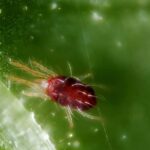
Spider mites, Tiny specks on leaves, fine webbing, yellowing or bronzing of leaves, Increase humidity, spray with neem oil or insecticidal soap, wipe leaves with a damp cloth
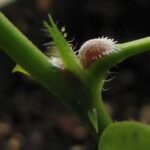
Mealybugs, White, cottony masses on stems and leaf joints, Remove with a cotton swab dipped in alcohol, and apply neem oil or insecticidal soap
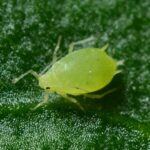
Aphids, Clusters of small insects on new growth, distorted leaves, Spray with a strong
Diseases
Common issues
Root rot, Wilting despite moist soil, yellowing leaves, mushy stems near soil line, Remove affected parts, repot in fresh, well-draining soil, reduce watering frequency
Leaf spot, Brown or black spots on leaves, sometimes with yellow halos, Remove affected leaves, improve air circulation, avoid overhead watering, apply fungicide if severe
Powdery mildew, White, powdery coating on leaves, Improve air circulation, reduce humidity, apply neem oil or fungicide
 Special Features
Special Features
Blood Leaf (Iresine herbstii) is prized for its striking foliage, which can range from deep red to bright pink, often with contrasting veins. This plant adds a vibrant splash of color to any indoor or outdoor space, making it an excellent choice for adding visual interest to gardens, terrariums, or as a standalone houseplant. Its ability to thrive in partial shade makes it particularly useful for brightening up darker corners of gardens or homes.
 Plant Benefits
Plant Benefits
While Blood Leaf (Iresine herbstii) is primarily grown for ornamental purposes, it does have some potential benefits. The plant is known to have mild air-purifying qualities, helping to remove small amounts of indoor air pollutants. In traditional medicine, some Iresine species have been used for their potential anti-inflammatory and diuretic properties, although scientific research on I. herbstii specifically is limited. As with any herbal remedy, consult a healthcare professional before use.
 Additional Information
Additional Information
Blood Leaf is often used in landscaping for its bold colors and ability to grow well in partially shaded areas. It’s particularly popular in tropical and subtropical regions where it can be grown outdoors year-round. In cooler climates, it’s commonly used as an annual in outdoor gardens or kept as a houseplant. The plant’s vibrant colors make it an excellent choice for adding contrast to green foliage plants in garden designs.
 Life Cycle
Life Cycle
Blood Leaf (Iresine herbstii) is a perennial plant in its native tropical habitat, but it’s often grown as an annual in cooler climates. Its life cycle begins with seed germination or propagation from cuttings. The plant grows rapidly during spring and summer, producing its characteristic colorful foliage. In late summer or early fall, it may produce small, inconspicuous flowers. In frost-free areas, Blood Leaf can continue growing year-round, but in colder regions, it will die back with the first frost unless brought indoors. With proper care, indoor plants can live for several years, continually producing new growth and maintaining their vibrant colors.
 Are Blood Leaf Poisonous, Toxic
Are Blood Leaf Poisonous, Toxic
Blood Leaf (Iresine herbstii) is generally considered to have low toxicity. However, it’s always best to exercise caution, especially with pets and children.
Toxic to cats, dogs, and children: Mildly toxic if ingested.
Toxic parts: All parts of the plant, particularly the leaves.
Affected organisms: Cats, dogs, and humans (especially children).
Symptoms of toxicity: Ingestion may cause mild gastrointestinal upset, including nausea, vomiting, and diarrhea. In rare cases, skin irritation may occur from prolonged contact with the sap.
Severity: Generally low. Symptoms are usually mild and self-limiting.
First aid steps:
1. Remove any plant material from the mouth.
2. Rinse the mouth with water.
3. Offer small sips of water to drink.
4. Monitor for symptoms and contact a healthcare provider or veterinarian if symptoms persist or worsen.
Preventive measures:
1. Keep plants out of reach of pets and children.
2. Educate family members about potential risks.
3. Consider placing the plant in areas inaccessible to pets and children.
4. Wear gloves when handling the plant to avoid potential skin irritation.
 Frequently Asked Questions
Frequently Asked Questions
-
Is the Blood Leaf Plant toxic to pets?
- No, the Blood Leaf Plant is non-toxic to pets and safe to grow around dogs, cats, and other animals.
-
How much sun does a Blood Leaf Plant need?
- The Blood Leaf Plant thrives in full sun to partial shade conditions. It prefers bright, direct sunlight for the best foliage color, but can tolerate some shade.
-
How often should I water my Blood Leaf Plant?
- Water the Blood Leaf Plant sparingly, allowing the soil to dry out slightly between waterings. It is drought-tolerant once established, so avoid overwatering.
-
What is the best soil for a Blood Leaf Plant?
- The Blood Leaf Plant prefers well-draining, nutrient-rich soil with a slightly acidic to neutral pH range of 6.0 to 7.5.
-
How do I propagate a Blood Leaf Plant?
- Blood Leaf can be propagated from stem cuttings or division. Take 4 to 6-inch stem cuttings, remove the lower leaves, and plant them in a well-draining potting mix. Keep the soil moist until roots form.
-
Does the Blood Leaf Plant produce flowers?
- While the Blood Leaf Plant may produce small, insignificant white or pink flowers, it is primarily grown for its vibrant foliage and not its blooms.
-
How big does a Blood Leaf Plant get?
- The Blood Leaf Plant typically grows 2 to 3 feet tall and wide at maturity, with an upright, bushy growth habit.
-
Is the Blood Leaf Plant an annual or perennial?
- The Blood Leaf Plant is a herbaceous perennial that can live for several years when grown in suitable conditions.
-
What temperature range is best for a Blood Leaf Plant?
- The ideal temperature range for the Blood Leaf Plant is between 65°F and 85°F (18°C to 29°C). It cannot tolerate frost or freezing temperatures.
-
How do I prune a Blood Leaf Plant?
- Prune the Blood Leaf Plant in early spring to maintain its shape and encourage bushier growth. Remove any dead or damaged stems and thin out overcrowded growth.
 Can I grow Blood Leaf in my indoor space
Can I grow Blood Leaf in my indoor space
Difficulty
Size
Light
Water
Flowering
Pet Safe
Air Purifier
 Iresine herbstii botanical details
Iresine herbstii botanical details
Common Name
Other Common Names
Botanical Name
Native Area
Family Name
Plant Type
Genus
Kingdom
 Photo Gallery
Photo Gallery
- Perky Plant fertilizer: https://amzn.to/3RdLA00
- Seaweed extract: https://amzn.to/3z2CsFh
- Rooting hormone: https://amzn.to/3bIXi0t
- Espoma fertilizer: https://amzn.to/3vPa9bs
- Worm compost: https://amzn.to/3HVL01u
- Full-spectrum Light Bulb-Large: https://amzn.to/3yR6VBu
- Full-spectrum Lighting: https://amzn.to/3qhhaiv
- Light meter: https://amzn.to/4dpmp3s
- Moisture meter: https://amzn.to/3TEUu5N
- Hygrometer: https://amzn.to/3Cf6h2F
- Pruning shears: https://amzn.to/3X6oOcg
- ProMix Potting Soil: https://amzn.to/3iVIrjE
- My Organic Green Gourmet Houseplant Fertilizer: healthyhouseplants.storenvy.com
- My Perfect Pumice: Healthy Houseplants Store
- My Organic Green Gourmet Houseplant Fertilizer: Healthy Houseplants Store
As an Amazon Associate, I earn commission from qualifying purchases.
 Plant Puns and Jokes
Plant Puns and Jokes
Why did the Blood Leaf plant refuse to go to the doctor? Because it was afraid of getting a ‘leaf’ transplant!




 My Blood Leaf Plant Care Recommendations
My Blood Leaf Plant Care Recommendations Buy Blood Leaf Online
Buy Blood Leaf Online